Every dog owner loves the idea of sharing adventures with their furry companion, but road trips with pets come with unique responsibilities.
Making sure your dog is safe, comfortable, and anxiety-free on the road isn’t just a matter of convenience; it’s essential for their well-being and for keeping both of you safe.
Here’s everything you need to know to ensure your dog’s car rides are secure, pleasant, and as smooth as possible.
Legal Requirements for Dog Car Restraints
Did you know that the Highway Code mandates pet restraint in vehicles?
Unrestrained dogs in cars aren’t just a safety risk—they’re a legal liability.
Failing to properly restrain your dog can lead to fines, and if an unrestrained dog contributes to an accident, insurance may not cover damages.
Ensure your pet is secured for your own protection and peace of mind, making the road safer for everyone.
The Benefits of a Dog Car Seat
Investing in a dedicated dog car seat is an excellent choice for safety and comfort. Here’s why:
- Enhanced Safety: A dog car seat greatly enhances safety during travel, keeping your dog secure even in sudden stops or unexpected situations.
- Comfort: The right Dog Car Seat provide a cosy, secure spot that keeps dogs calm and relaxed.
- Reduced Anxiety: Some dogs feel calmer in dog car seats like the Dog Pod, where they sink into their seat without having to worry about looking out the window all the time. This Dog Car Seat also comes with harness attachments, combining restraint and comfort in one.
Dog Travel Sickness: Natural Remedies vs. The Right Car Seat
While natural anxiety remedies like lavender sprays, CBD treats, or car-safe calming diffusers can soothe some dogs, a well-designed dog car seat often helps conquer the route cause of the problem (Motion Sickness) rather than subdue it.
By having an associated safe space, in the car, your dogs anxiety will be massively the structure they need, reducing the need for extra treatments.
Pre-Trip Training: Preparing Your Dog for Car Rides
Ease your dog into car travel by starting with short drives and rewarding calm behaviour.
Here’s a quick guide to pre-trip training:
- Start Small: Begin with short trips around the block.
- Positive Associations: Bring treats and toys to make the car a positive place.
- Build Up Gradually: Increase trip length as your dog gets more comfortable, helping them adjust to longer journeys without stress.
Ventilation and Temperature Control
Dogs are more sensitive to temperature than humans. Here’s how to keep them comfortable:
- Use Sunshades: Sunshades on windows can block excessive heat.
- Ventilation: Slightly crack windows to allow fresh air in (but never let dogs hang out of the window).
- Frequent Breaks: On longer trips, stop every 1-2 hours for hydration and fresh air.
Customer Review - How the Luther Bennett Dog Pod Changed Car Travel for Jasper
Jasper absolutely loves his new Luther Bennett car seat!

He’s never been so relaxed and content during car journeys.
In fact, when I was assembling the seat in the living room, he insisted on sitting in it.
It’s so well-padded and comfortable that he actually preferred it to his own bed and was a bit sad when it was moved to the car.
If Luther Bennett ever expands their collection to include dog beds, we’ll be the first in line! On top of that, the customer service was exceptional.
There was an issue with delivery (not Luther Bennett’s fault), but they were incredibly helpful and quick to resolve it.
Emergency Essentials for Dogs in the Car
Being prepared can make all the difference on a road trip. Pack a travel kit with:
- A collapsible water bowl and water bottle
- Waste bags and cleaning wipes
- A favourite toy or blanket
- Basic first-aid supplies, like antiseptic wipes and bandages, for small injuries
Avoid These Common Mistakes When Travelling In The Car With Your Dog
Ensure a smooth ride by avoiding these pitfalls:
Safety Tips for Securing Your Dog in the Car
Right-Sized Restraint: Ensure the harness or restraint system you choose is appropriately sized for your dog.
For smaller breeds, options with adjustable, padded harnesses can prevent unnecessary pressure, while larger dogs require strong, securely anchored attachments.
Safe Seat Positioning: For optimal safety, place your dog in the back seat whenever possible. However, they prefer the front, make sure the restraint provides a secure fit to limit sudden movement.
Comfortable Movement Allowance: The restraint should provide just enough give to allow your dog to sit or lie comfortably but not so much that they can roam. This balance helps reduce discomfort from excessive restriction while keeping them secure.
Use of High-Sided or Stabilising Beds: For dogs who tend to shift around in the car, a restraint combined with a high-sided or stabilsing car bed can help them settle and feel more protected, which also minimises movement during sharp turns or sudden stops.
Signs of Dog Car Sickness or Anxiety and What to Do
If your dog shows signs of car sickness—such as drooling, panting, or restlessness—take a moment to help them:
- Increase Ventilation: Fresh air can sometimes ease nausea.
- Stop for a Break: Give your dog a few minutes outside the car to reset.
- Use Natural Remedies Judiciously: Calming sprays or mild remedies can provide additional relief, but ensure they’re safe and pet-approved.
- Invest In A Dog Car Seat
Frequency of Breaks for Long Journeys
On extended trips, plan breaks every 1-2 hours. This lets your dog stretch, hydrate, and relieve themselves, reducing fatigue and keeping them comfortable.
The more comfortable they get in the car the longer you will be able to travel without stopping.
Car travel can be a joy for both you and your dog with the right preparation.
These tips will keep your furry friend safe, comfortable, and calm on the road, ensuring your adventures together are as enjoyable as possible.
Ready to make every trip a breeze?
Secure your dog car seat, pack those essentials, and hit the road with peace of mind.


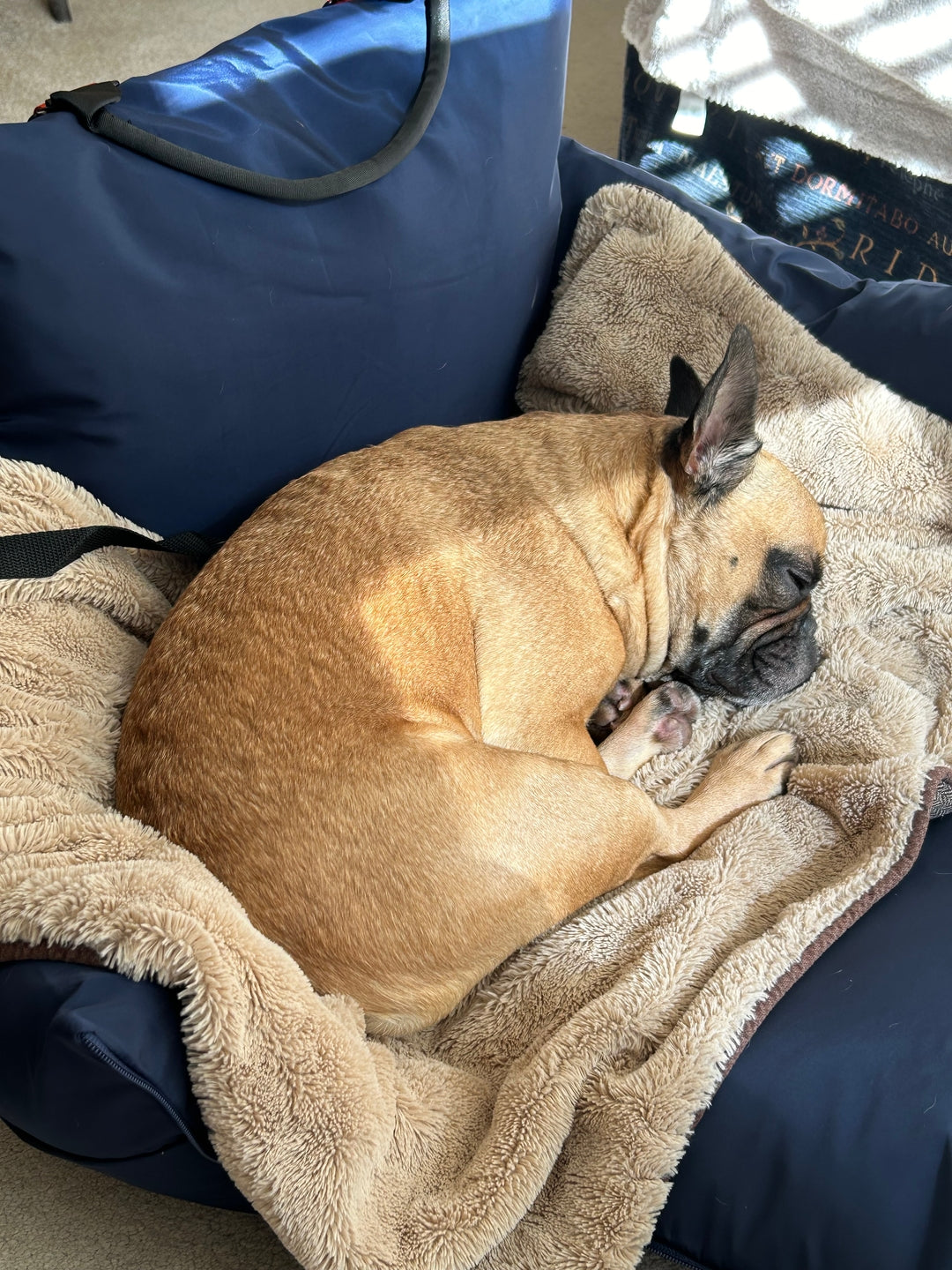
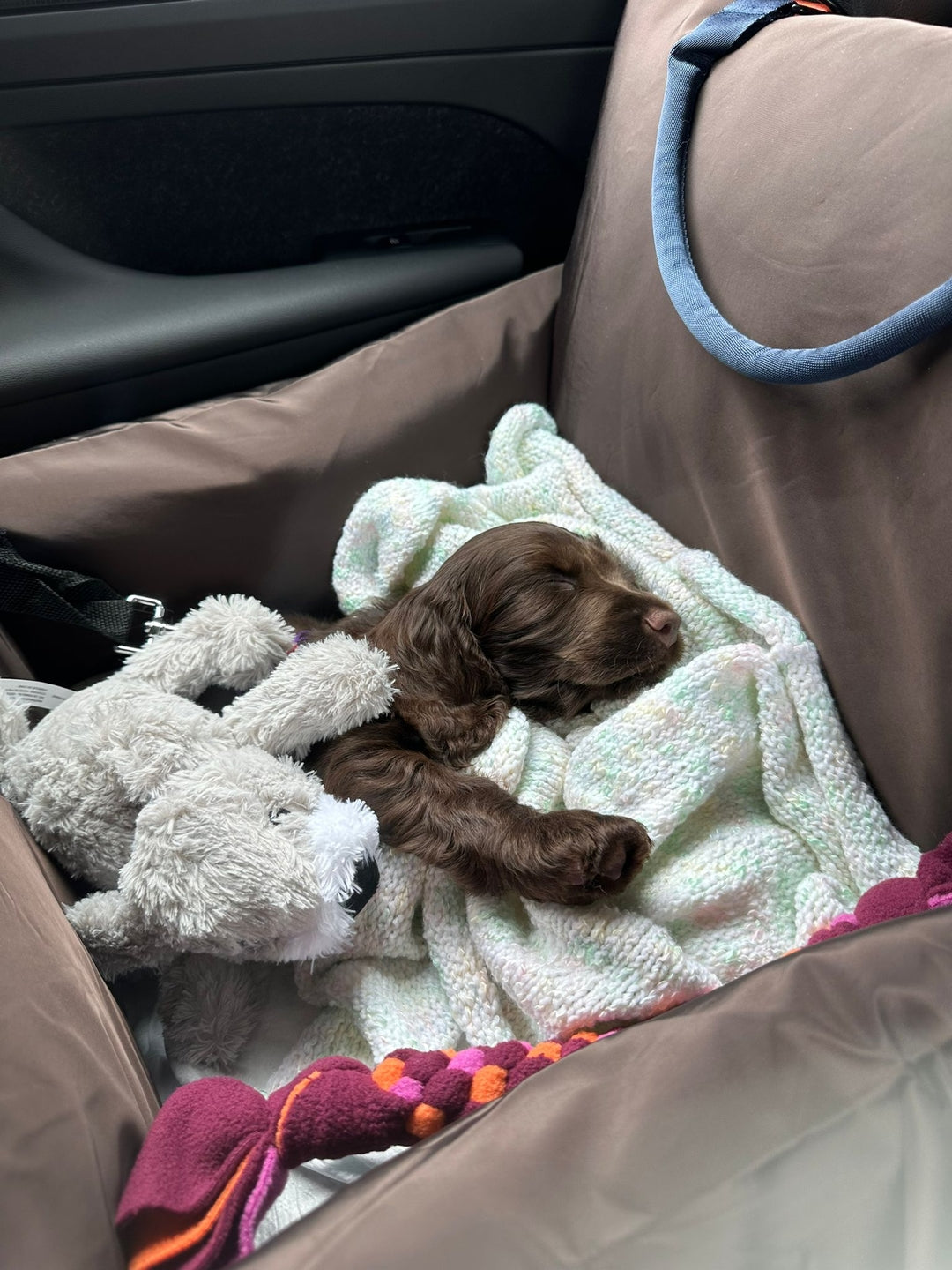
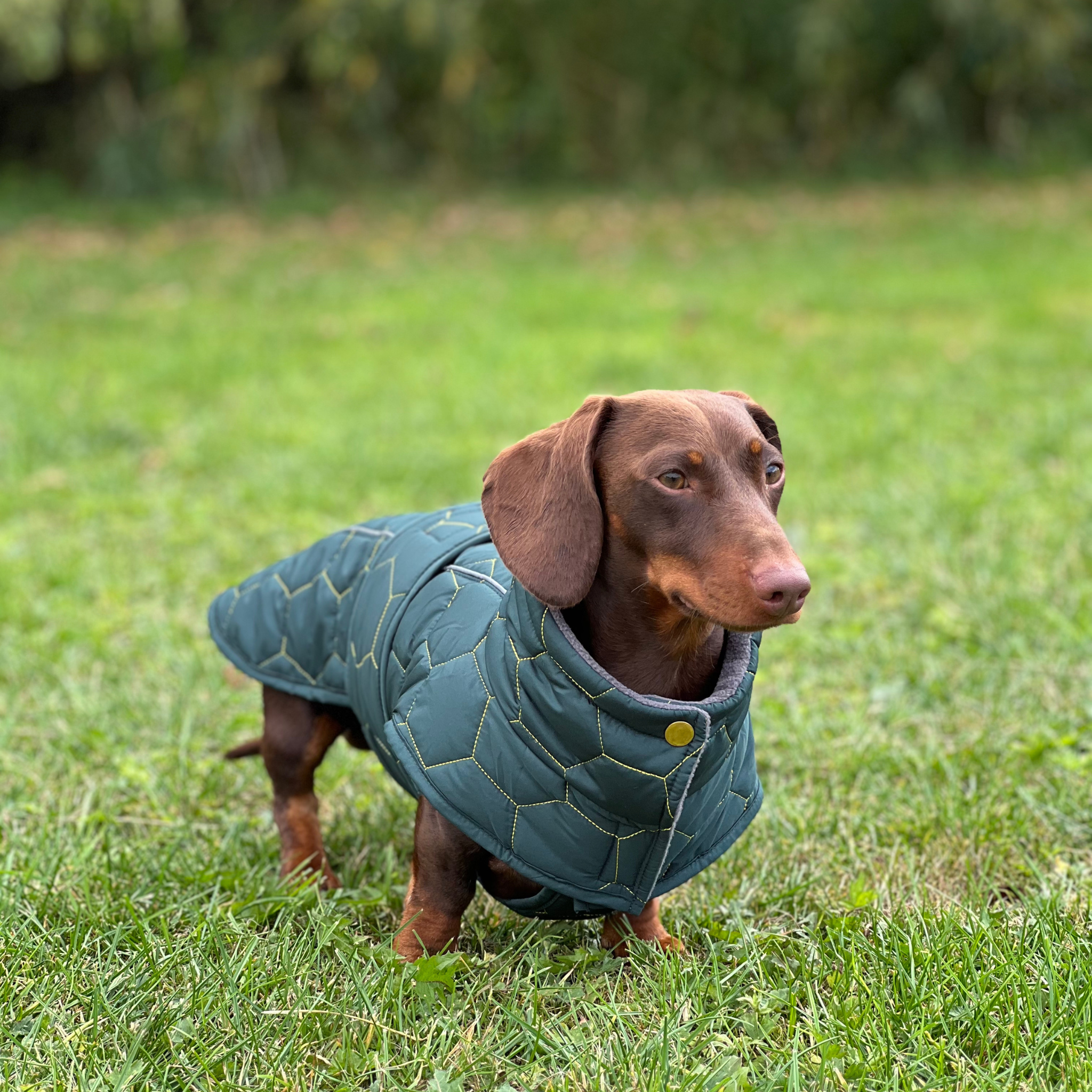
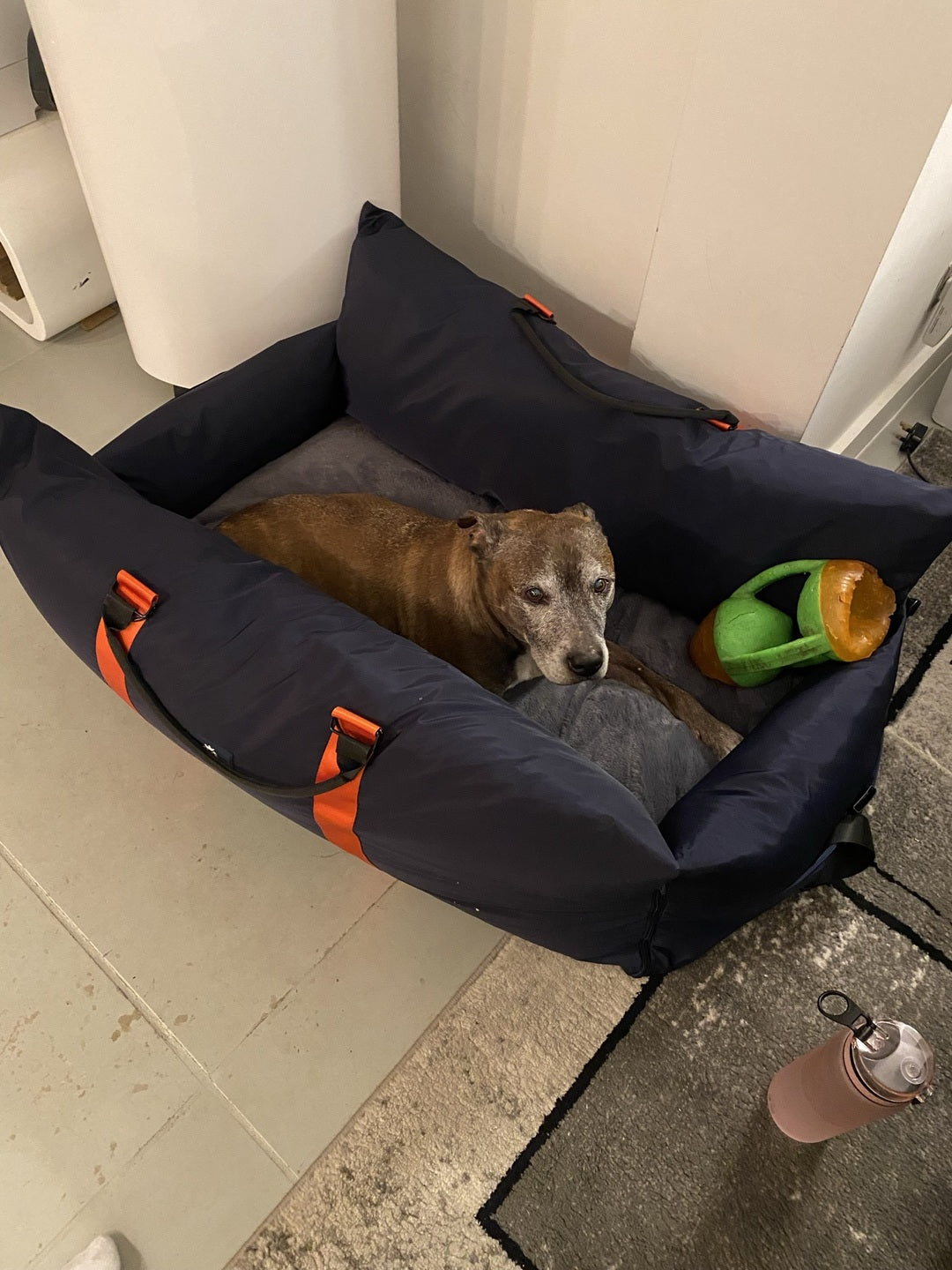
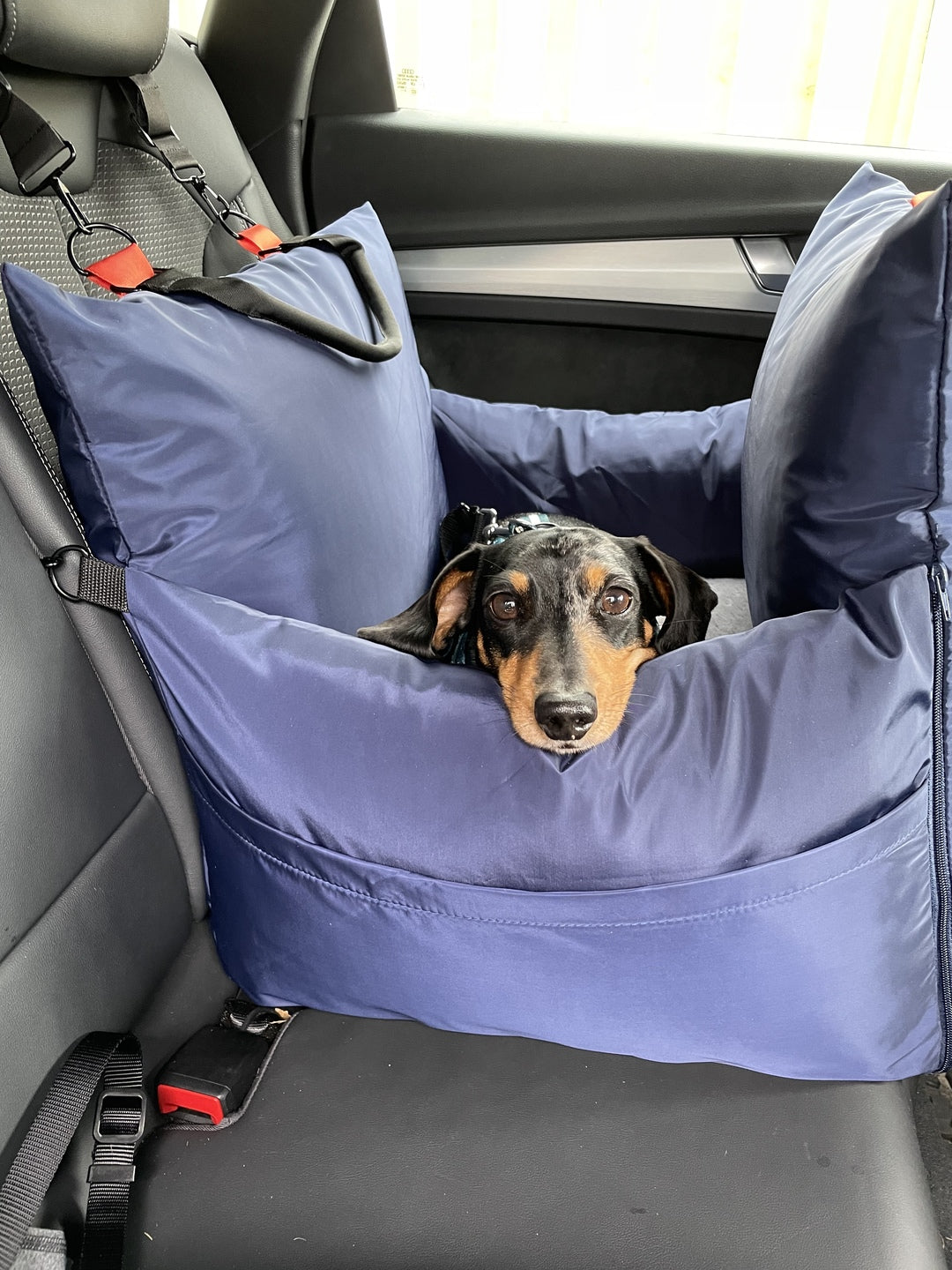
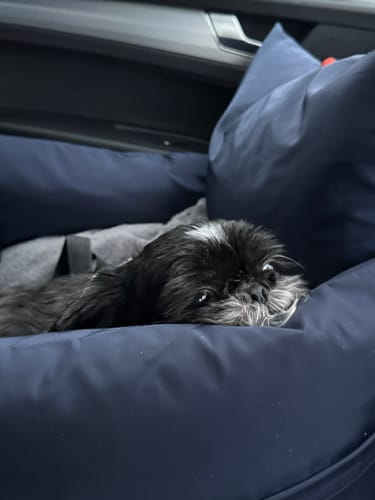
Share:
Look For These 6 Things When Buying A Dachshund Dog Car Seat
I found the best Dog Car Seat for Long Journeys: Here is what to look for